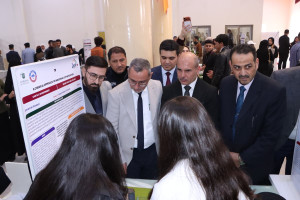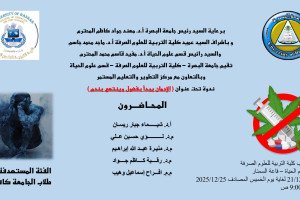
The College of Education for Pure Sciences, Department of Mathematics, University of Basra, discussed a master’s thesis on (the study of random influences in the repeated measurements model)
The thesis presented by the student (Fatima Hamid Ali) included four aspects. In the first aspect, the mathematical model of repeated measures was adopted, and the analysis of variance of the mathematical model was studied. The least squares method was used to estimate the fixed effects. In addition, some characteristics of estimators were studied and the distribution of least squares estimators was determined. On the other hand, confidence intervals for the variance components were determined. The test statistics and the power function of the hypothesis corresponding to each factor in the mathematical model were defined. In the third aspect, the method of greatest weighting was used to estimate the variance components of the repeated measures model, and we used the mean square error to compare the estimators of the greatest weight with the estimators of the partial weighting. We also determined the moments corresponding to each estimator. We found the bias and variance equations for each estimator.
The results showed that the maximum weighting method is better than the penal weighting method, as it had the least squared mean of the error. Finally, we chose agricultural experiment data to show the practical side of the methods used in this study. Experimental data represent the effect of boron and calcium in improving pollen grains and their effects on the physical characteristics of date palm fruits of Al-Halawi and Al-Sayer cultivars. Statistical methods and tests were applied to agricultural experiment data. The variance in the productivity of Al-Halawi and Al-Sayer cultivars was estimated. The results showed that the variance of experimental error is small compared with the variance of random influences on the change in the amount of agricultural production, which increases the accuracy of the model.
The study proved that each factor had a significant effect on the studied trait by using the F test.








